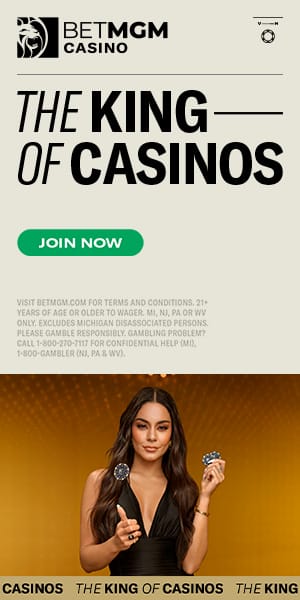Increase your online poker profits by backing other players for a share of the wins.

The concept of value frequently comes up in poker theory. Calculating expected value (EV,) for instance, has become a must-have poker skill if you want to succeed in online poker. EV is the average return on each dollar you invest in a pot. If you can expect your action to make you more money than you’re betting, the action has a positive expectation (+EV). Of course, poker variance being what it is, it’ll lose you money along the way, but in the long run, it’s a good investment.
Would you believe that similar thinking can be applied to poker players themselves? Just as poker chips represent money to be lost or won, so do poker players represent a potential return on investment. It all comes down to their EV. Intrigued? Read on and delve a little deeper into the art of investing in poker players.
Introducing Poker Staking

The first people to invest in poker players were other poker players. Typically, current and former players will provide financial backing for a player’s entrance fee into poker tournaments. As many as half of the contestants in the World Series of Poker (WSOP) Main Event receive financial support from current or retired poker players, family members, and other poker investors. This helps players to buy into games they might not otherwise be able to afford. In exchange for the backing, investors receive a share of the winnings. This gives them the chance to turn a profit without playing a single hand of poker themselves. Sometimes, backers will influence which cash games or poker tournaments players take part in. It’s similar to what angel investors do when they put money into a start-up they believe will yield a positive return. It’s just that the investment is a person, not a company.
How Poker Staking Works
In formal terms, poker staking is a deal between the investor (the “backer”) and the player (the “horse”). The backer provides a bankroll for the player to use in cash games or poker tournaments. The deal is that all profits accrued over a certain period or during specific events are split between the backer and the horse. Often it’s a 50/50 arrangement, but both sides could agree on any percentage split. It’s important to note that at no stage does the bankroll belong to the player – they have to return the money when the deal comes to an end.
The investment case for staking is that if the horse wins consistently, the backer starts to develop a positive expectation, and the staking agreement develops into a win-win. Say a backer lends their horse a $100,000 bankroll to play in $5/$10 no-limit Texas Hold’em cash games with a 50/50 profit split agreement. Over time, the horse generates $20,000 in hard-ground profit. The player pockets half, and the investor pockets the other half, but — importantly — also keeps the original $100,000 bankroll.
The Risks of Poker Staking
So, what happens if the horse consistently loses? Say a backer stakes a player for $100,000 to enter multi-table tournaments. The player blows $40,000 on failed tournament buy-ins, then manages to win a tournament for $25,000. Big win. But the player is still on the hook for $15,000. Known as “make-up,” this debt has to be repaid before the profit split becomes operative. So the horse gives the backer the full $25,000 in winnings. Maybe they get to keep a small amount for living expenses (a horse must eat), but it won’t be much.
Here’s where poker staking can be a risky proposition for both parties. A player with $15,000 in make-up could simply decide to quit the poker game for good, leaving the investor high and dry to the tune of $15,000. So, what’s the player risk? They could find themselves trapped in a situation where they never get to keep any winnings, like some kind of poker slave. Either they win it all back, or they repay it from their own pocket, their backer walks away, or they quit poker for good. The staking contract remains in force until the make-up is returned, so if a player quits, does something else for a few years, and then makes a comeback, they’re still obliged to repay their old backer.
Tips for Getting Started

Interested in staking other poker players? You might want to simply invest your money and calculate the return on investment, but it’s more complicated than that. First, you have to find the right horse — or horses — to back. There are many poker sites dedicated to staking where you can find players with proven track records of consistent wins ($100,000 in cash game wins or 20% success rate in poker tournaments) and a solid understanding of bankroll management in poker. Take a look at some of the top poker Twitch streamers to get an idea of the stats. Obviously, standard investment age requirements apply — you can’t back players under the age of 18.
Once you’ve found a viable candidate, it’s time to negotiate the terms of the staking agreement, including the percentage profit split, the duration of the agreement, and that all-important make-up clause. Make the terms clear upfront and in writing so there’s no misunderstanding down the line.
Something else to consider is variance. Everyone knows that poker has its ups and downs, and so will the horses you back. Be sure that the bankroll you stake is correct for the variance of the events your horse is going to enter. As a rule, a player’s bankroll should cover at least 100 buy-ins for no-limit cash games, 300-400 big bets for limit cash games, at least 60 buy-ins for single table sit-and-gos, 20-40 buy-ins for heads-up sit-and-gos, and 150-300 buy-ins for multi-table tournaments. You can also mitigate variance risk by diversifying your investments. For instance, you can spread the risk by backing multiple players or investing in different formats.
Upgrade Your Poker Skills at BetMGM
Want to develop better strategies while improving your bankroll management in poker? Register at BetMGM to raise your poker skills to a higher level, with plenty of exposure to top-rated cash games, sit-and-gos, and online poker tournaments. You might even find opportunities to invest in poker players. For your further entertainment, you can access a broad range of slots, classic table games, and variety games in the BetMGM online casino.


